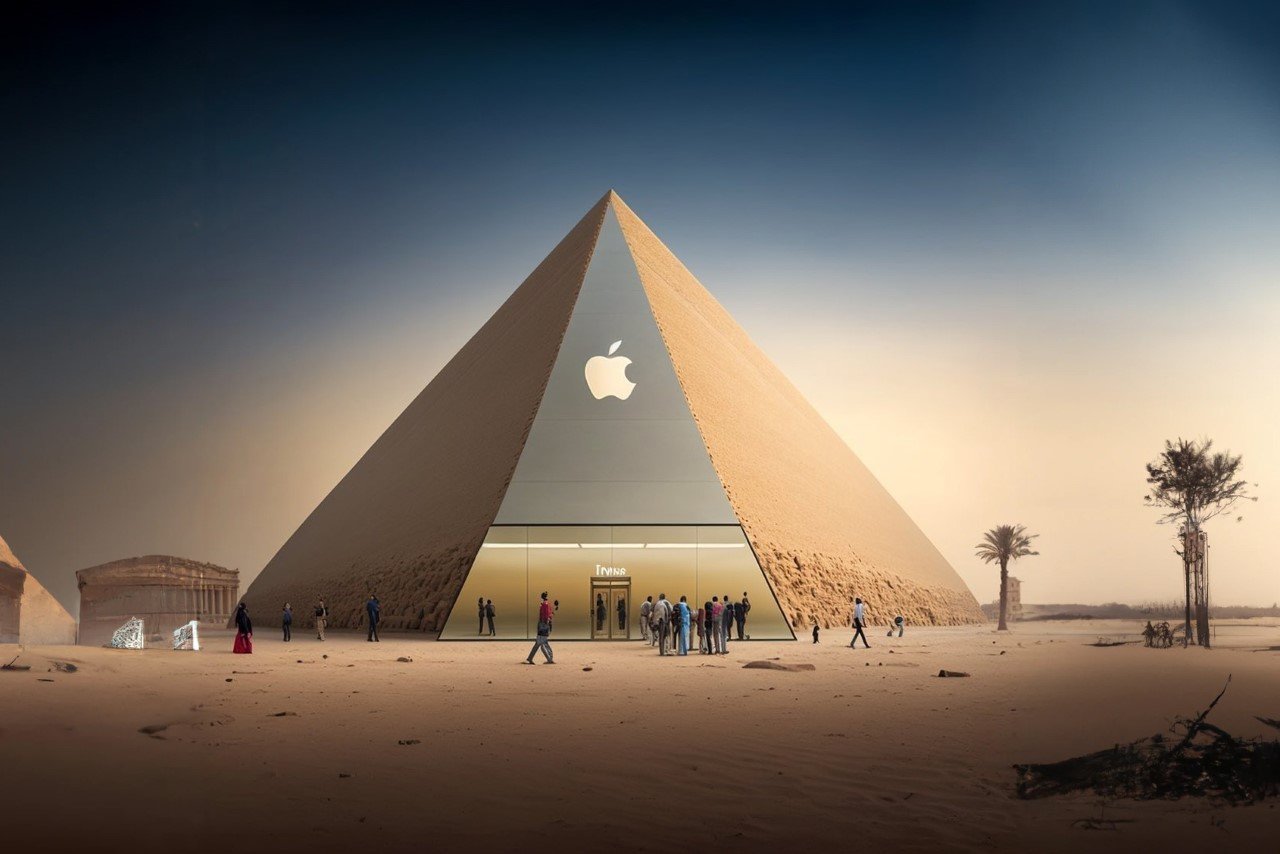
Ever wondered what Apple stores from around the world would look like if they were built in the style of regional architecture? Designer Shail Patel used MidJourney to see what flagship stores would look like around the world, combined with the architectural flavor of the region.
The different stores broadly show two things – firstly, they show the AI’s understanding of specific architectural styles from around the world and from different eras. Secondly, they also take things a step further by depicting what a “tech showroom” would look like in the same architectural style. The results definitely give us something to think about.
Designer: Shail Patel
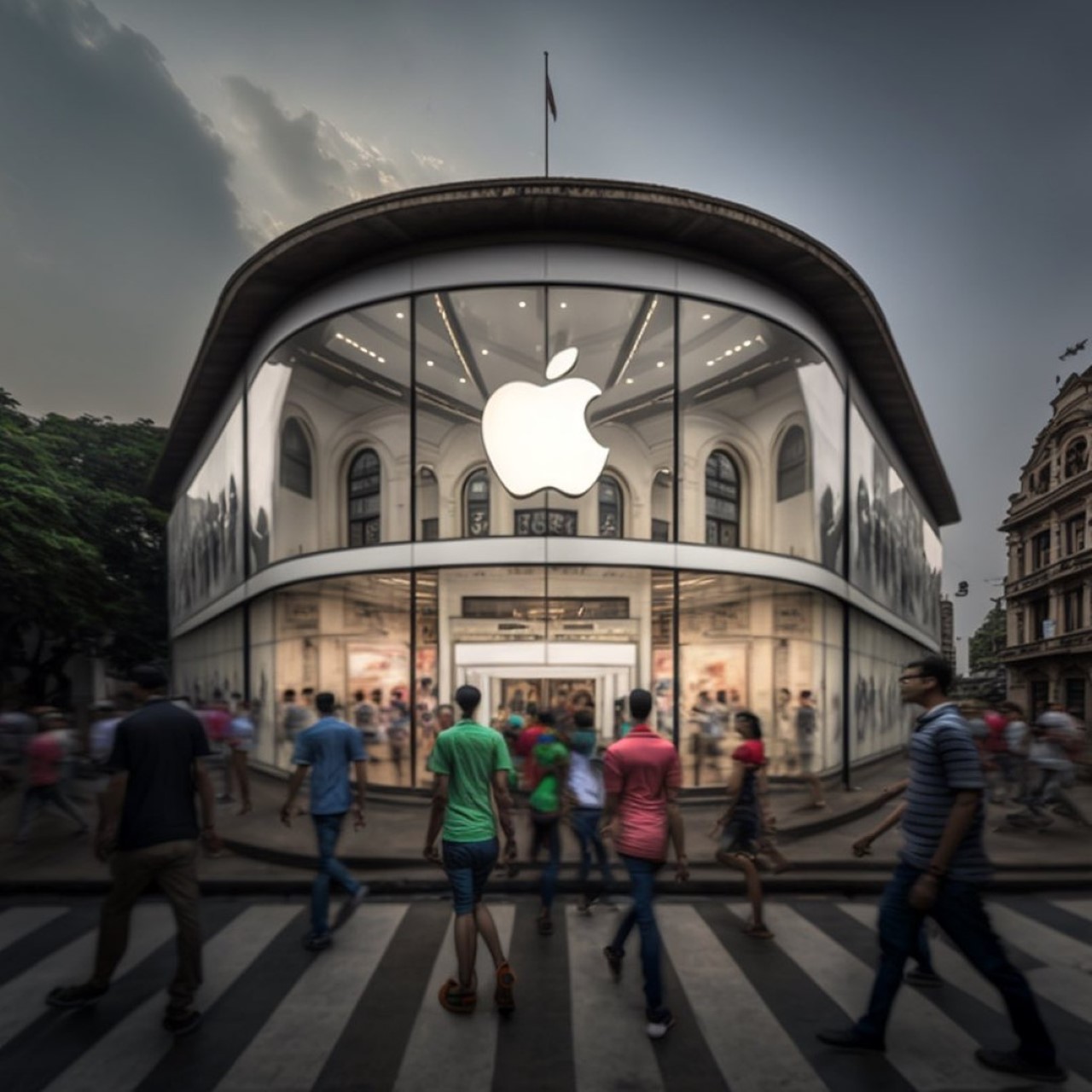
Apple Store meets Renaissance Revival (Europe)
The glass paneling provides the perfect facade to this imaginary store, with a distinct renaissance architectural style. There’s a certain grandiosity to this store, both with the massive glass front along with the high ceilings and arched columns behind it. The store sits at an intersection of sorts, making it an absolute prime spot and accessible/visible from multiple sides. That Apple logo also ends up becoming a very strong symbol, attracting people into the store… even if it’s just to browse!
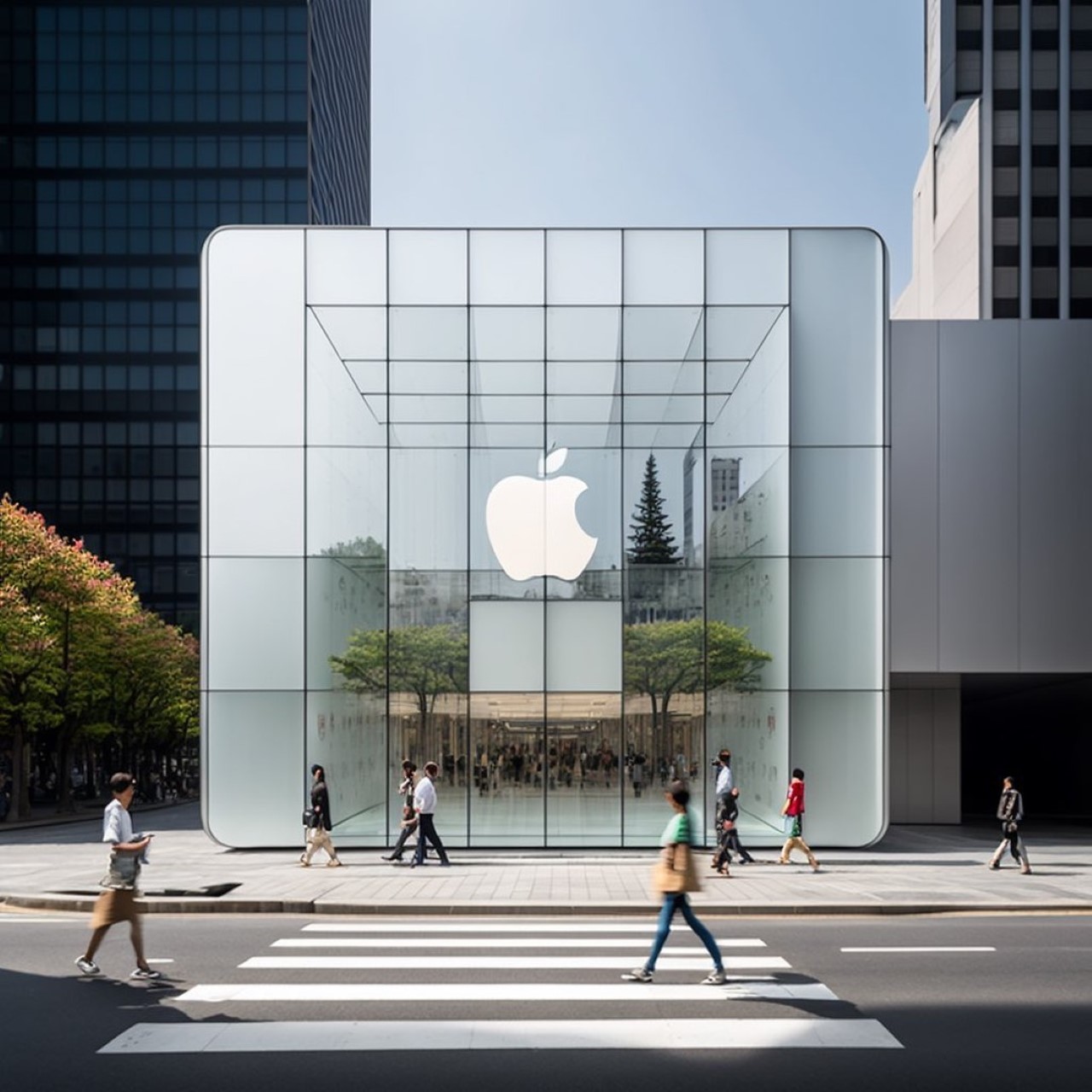
Apple Store meets Urban Minimalism (Scandinavia + Tokyo)
This sort of minimalism is something Apple does best. Glas facade, square-shaped building, the storefront looks like an Apple product! The use of white on the inside keeps the interiors looking pristine (just the way Apple likes it), and the flat glass paneling on the front reflects the buildings around it, creating an illusion that lets it blend into the background, while still being pretty eye-catching and iconic.
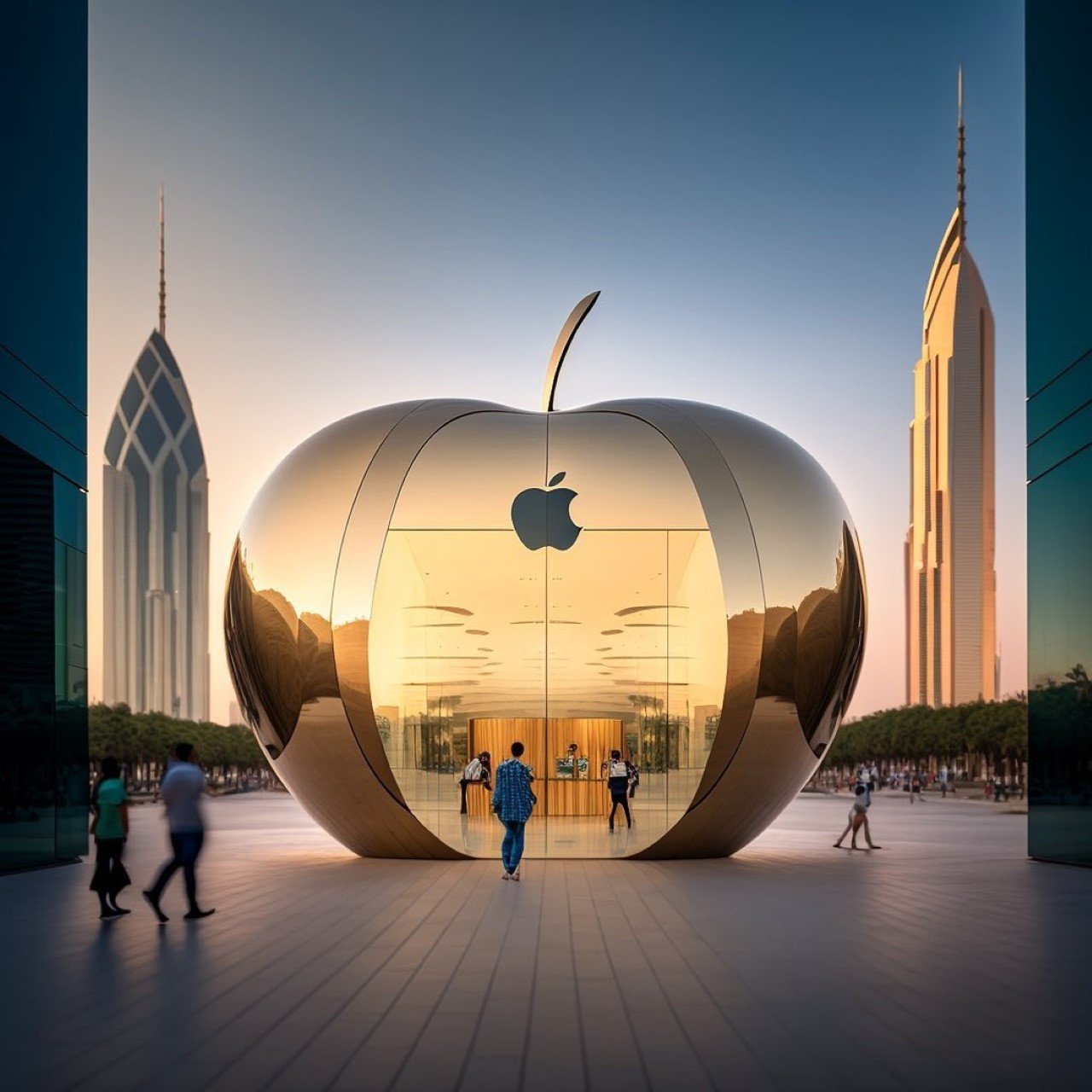
Apple Store meets Kitsch/Novelty Architecture (New York – Big Apple)
Speaking of eye-catching and iconic, nothing beats this store! Situated probably in New York (also known as The Big Apple), this storefront is oddly appealing, and between you and me, Apple wouldn’t be caught dead making something like this. That’s why we have the power of AI to help us imagine what a Mimetic/Novelty Apple store would look like. Recognizable even from a distance, the store looks like a massive golden apple, complete with a stem on top. The outer facade makes the store look larger than it actually is, because the insides remain traditional with flat vertical walls. I could see something like this in Dubai, if you ask me.
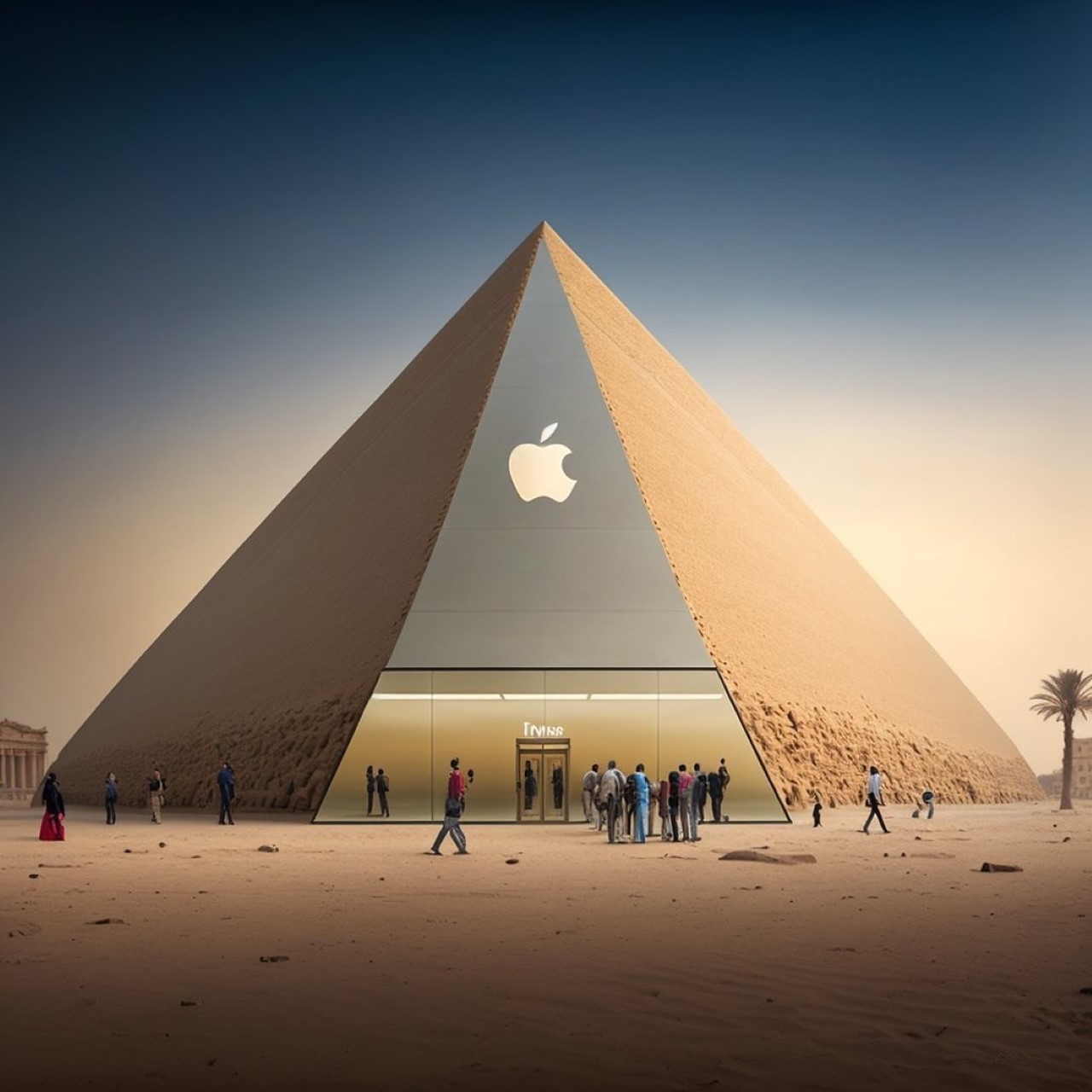
Apple Store meets Pyramids (Egypt)
This one’s bordering on a tiring stereotype, but I do like the idea of a pyramid-inspired Apple Store. It looks mysterious, sophisticated, and regal. The pyramid’s clean design fits perfectly with Apple’s own design ethos, although it looks a little too large for a single retail space. I’m pretty sure it would be some form of cultural appropriation too, which isn’t a good look for Apple.
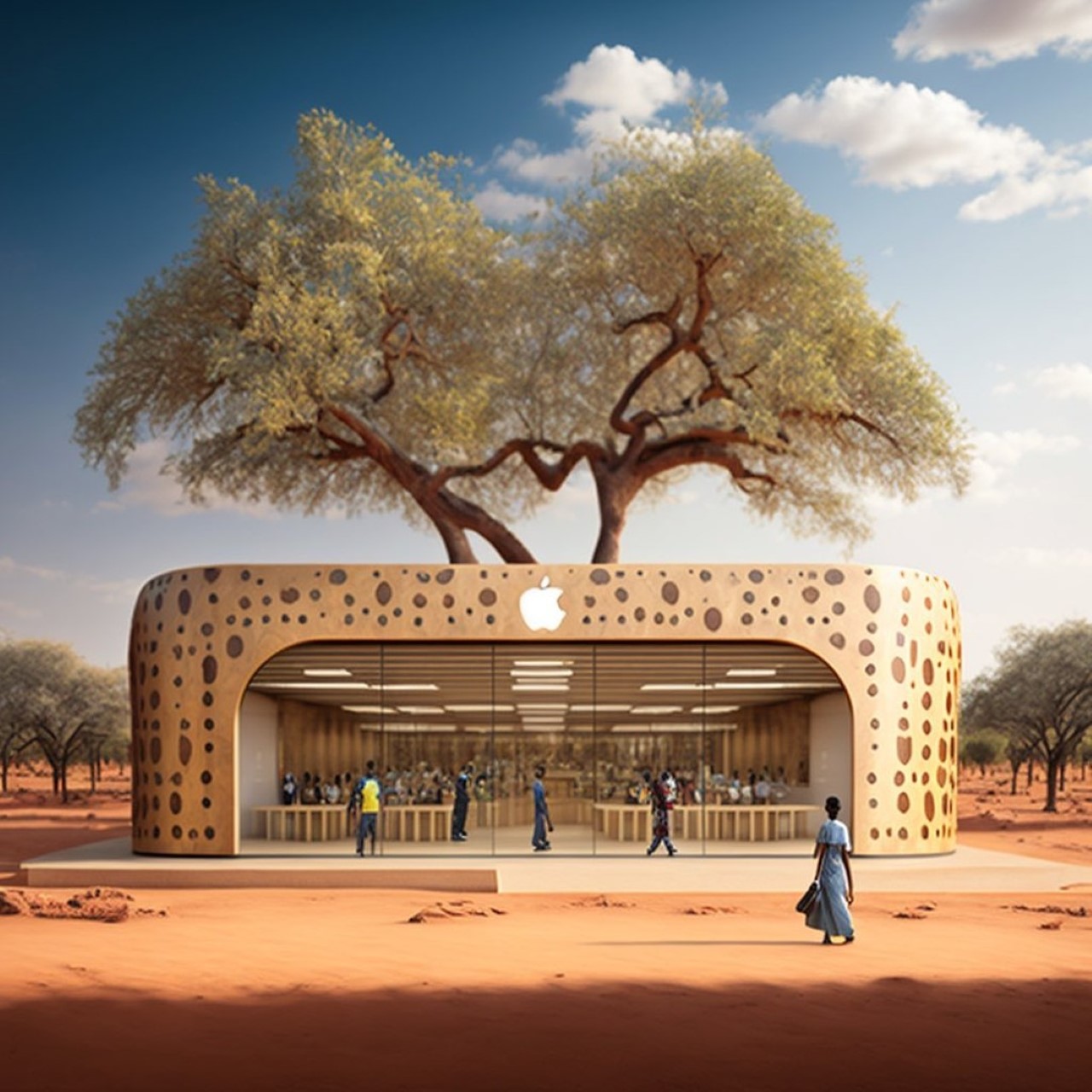
Apple Store meets Indigenous Sudano-Sahelian Africa (Central Africa, Sudan)
This one is an understated beauty. It’s raw yet incredibly inviting and shows how Apple’s retail architecture melts perfectly into the mud and clay-based styles of the Nubian or Sudano-Sahelian world. This particular style, found in parts of southern Egypt and Sudan, uses indigenous materials in its architecture, while also incorporating geometric themes and motifs to elevate it. The Apple logo built right into the mud storefront frame looks absolutely beautiful, and the glass facade on the front reveals a warm, earthy, woody interior.
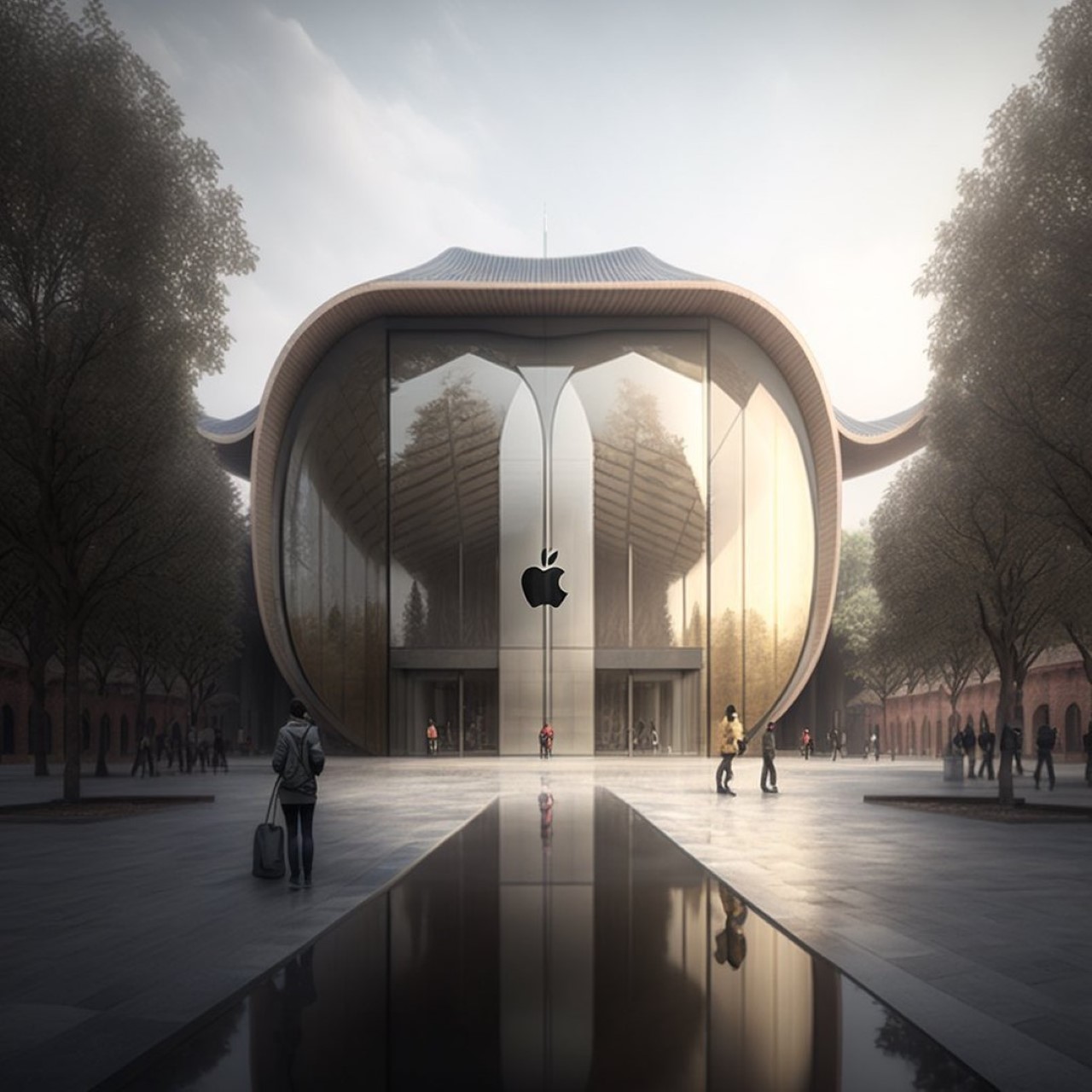
Apple Store meets Japanese ‘Nihon Kenchiku’ (Japan)
Inspired clearly by the buildings and monuments found in Japan, this Apple Store has the signature curved roof that’s an iconic part of Japanese architecture. There’s also the use of glass and concrete, which aren’t really traditional, but then again, having an Apple store with paper walls isn’t particularly desirable, now is it?! The entire store evokes a sense of tranquility and zen, aligning it perfectly with Apple’s own brand of no-nonsense minimalism.
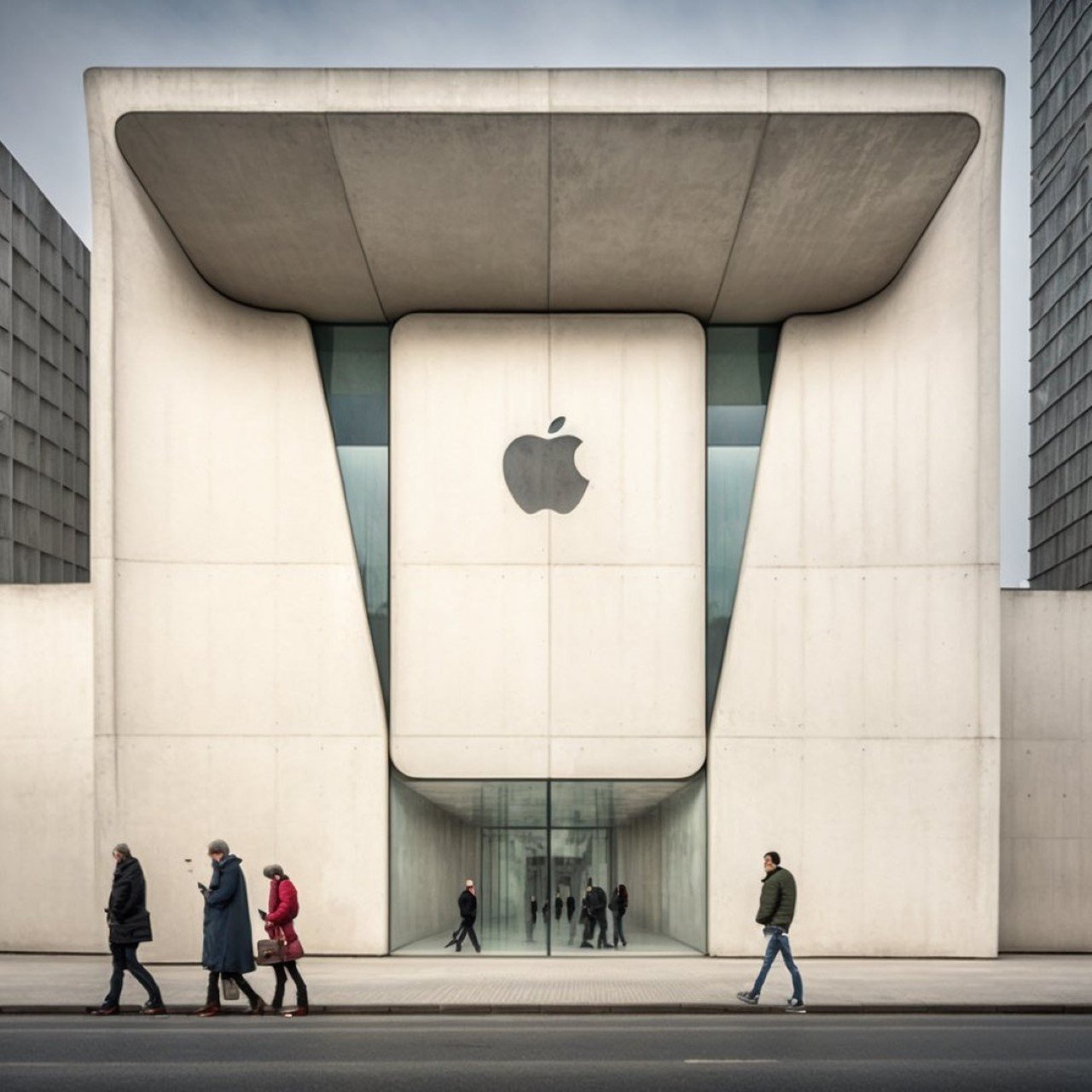
Apple Store meets Brutalism (Post-War Europe + USSR)
Brutalism itself was born out of a zero-frills mentality too. Originating in post-war Europe, Brutalism sought to revive and reconstruct a war-torn continent. Now, the Brutalist style roots itself in sensiblism – its characteristics are the use of large concrete panels and angular shapes. The buildings are made to look large and imposing, rather than compact. The Apple Store, similarly, has a massive concrete outer structure, with judicious use of glass paneling. The interiors would probably be open and airy, but the corridor that takes you from the main gate to the interiors is narrow, with a low-ish ceiling. A moment of discomfort and claustrophobia before you emerge into the real Apple store.
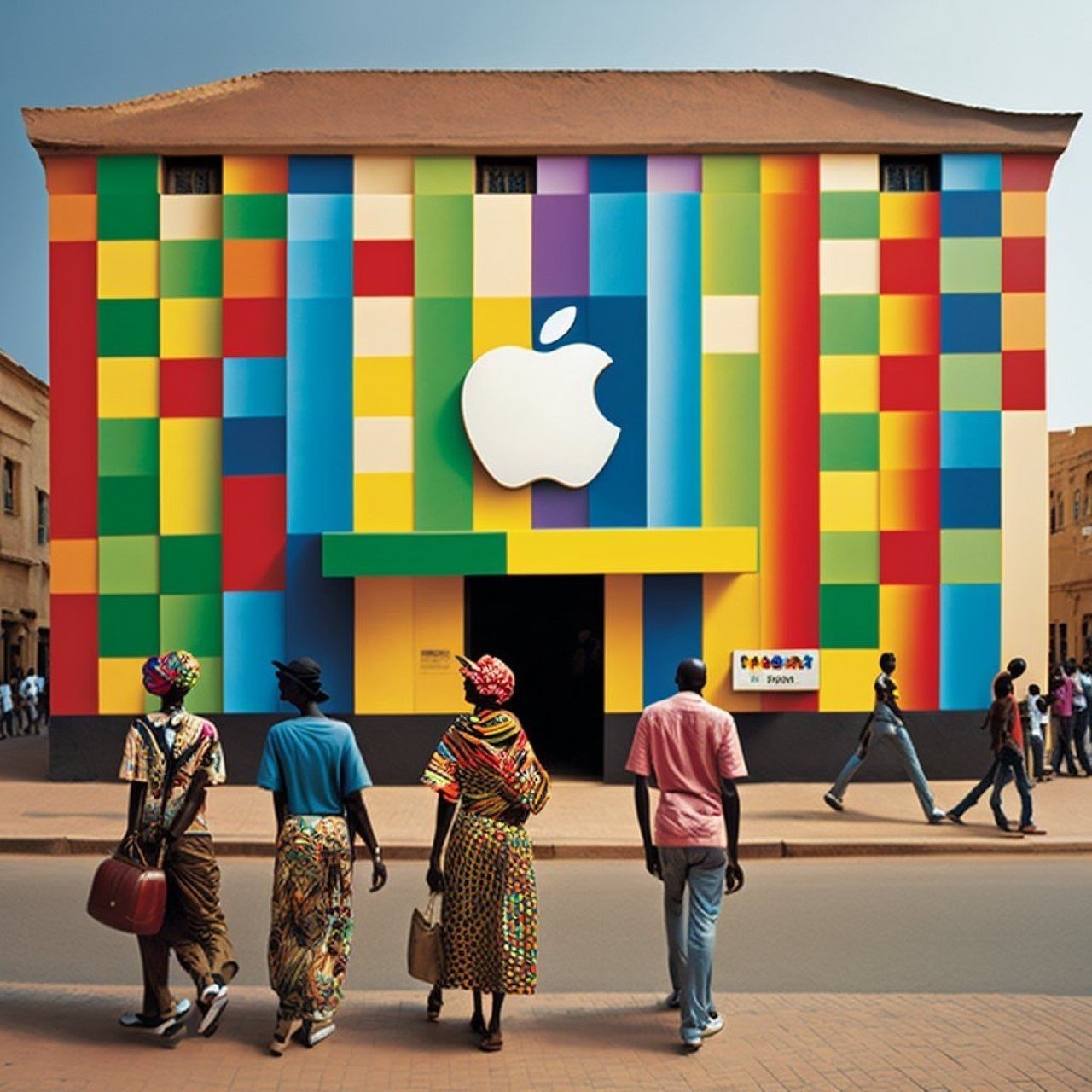
Apple Store meets South African Architecture (South Africa)
With its vibrant facade, there’s no missing this Apple store. Although not entirely following a distinct architectural style, this store does make use of vibrant colors, referencing the Ndebele tribe’s common practice of painting colorful murals on the walls of their buildings. The color does wonders for the retail space, allowing it to stand out against the beige tones of the city.
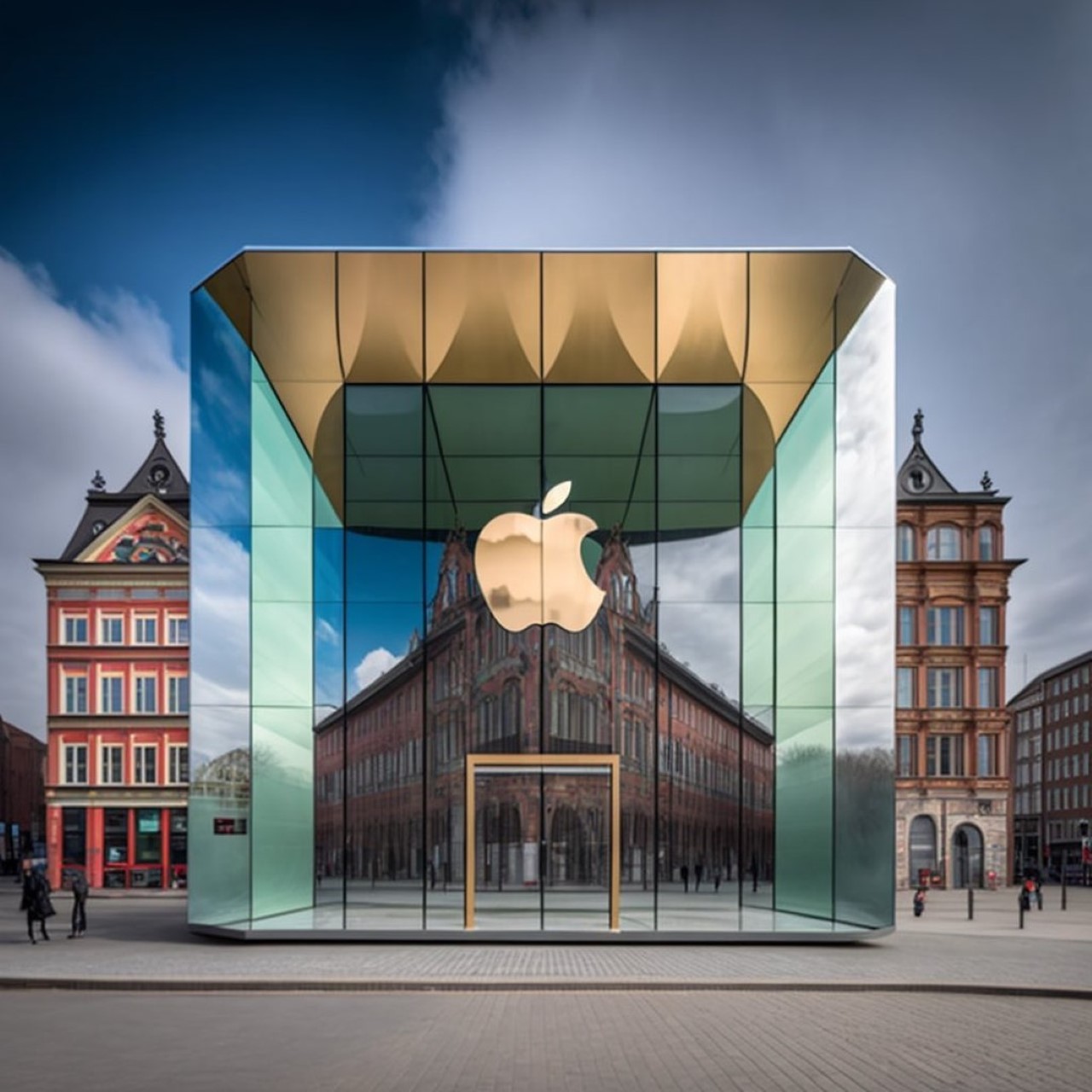
Apple Store meets European Modernist (Europe)
The final Apple store as a part of this tour takes us to Northern Europe. The image above shows us two distinct architectural approaches of the region – Art Deco (stemming from the neoclassical style), and Modernism. The Apple store here is clearly the latter, but it stands out wonderfully against its background of buildings from nearly a 100 years ago. The modernist style is a slight bit different from its sibling, the minimalist style. While minimalism looks to remove any sort of unnecessary detail, modernism tries to balance minimalism with a sense of flair. The Apple store here is all glass, to begin with, but it has facets in the right places, gold details, and reflects the art deco buildings around it. The building also seemingly floats a couple of inches off the ground, setting it a literal notch above its competition!
The post Designer depicts Apple Stores from around the world in different architectural styles first appeared on Yanko Design.
0 Commentaires